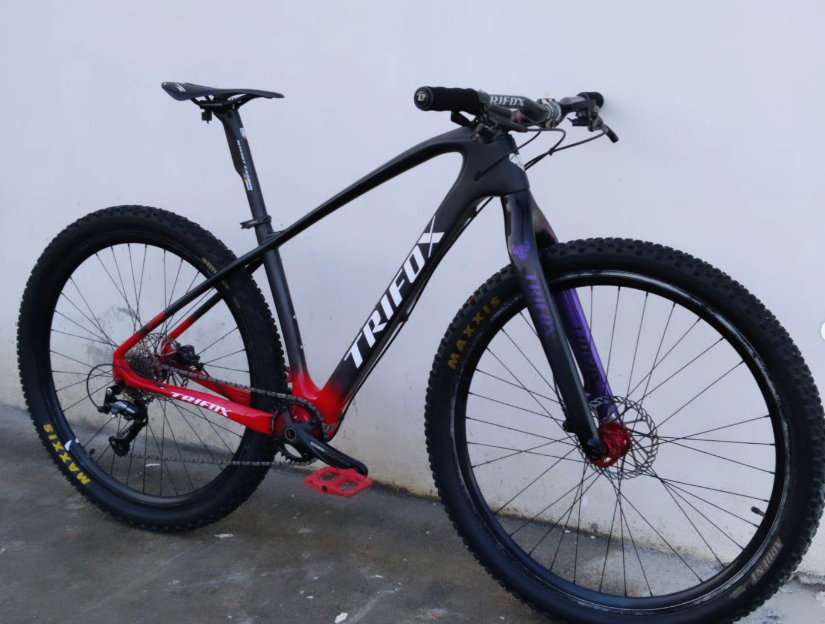
Boost rigid carbon forks offer a blend of strength, lightweight performance, and precise handling, making them ideal for demanding trail rides. Here’s how to maximize the benefits of your boost rigid carbon fork, like the Trifox TMK100. 1. Proper Installation Start with the correct installation. Ensure the fork is compatible with your frame and wheel setup. The Trifox TMK100, designed for 29er wheels and disc brakes, features a tapered steerer tube for improved stiffness and control. Carefully follow the manufacturer’s instructions to secure it properly and achieve optimal alignment. 2. Wheel Compatibility Ensure your wheels are boost compatible (110mm front hub spacing). This wider stance enhances stability and provides better handling on technical trails. Pairing your fork with the right wheels is crucial for maximizing performance. 3. Tire Selection Match your fork with suitable tires. Wider tires (up to 2.5 inches) offer better traction and comfort, complementing the fork's rigid nature. Adjust tire pressure to find a balance between grip and rolling resistance based on trail conditions. 4. Regular Cleaning Keep your fork clean. Mud and debris can accumulate, affecting performance over time. After rides, gently rinse off dirt and dry thoroughly. Avoid high-pressure water, which can damage the fork’s finish. 5. Periodic Inspection Regularly inspect your fork for any signs of wear or damage. Check for cracks, especially around the steerer tube and axle mount areas. Early detection of issues allows for prompt repairs, preventing further damage. 6. Maintenance Though rigid forks require less maintenance than suspension forks, occasional lubrication of the headset and cleaning of the fork legs ensures smooth operation. Follow the manufacturer’s guidelines for any specific maintenance procedures. 7. Ride Adjustment Adjust your riding style to leverage the fork's rigidity. Approach technical sections with confidence, knowing that your rigid fork offers precise handling and direct feedback from the trail. By following these tips, you can get the most out of your boost rigid carbon fork like the Trifox TMK100, ensuring a reliable and exhilarating ride on any terrain.
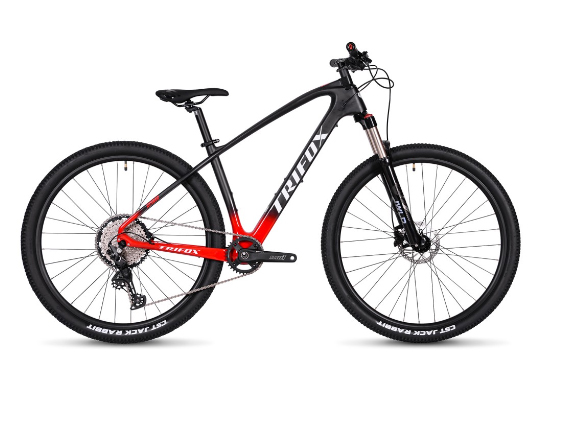
Selecting and maintaining a durable mountain bike (MTB) frame is essential for conquering rugged trails and ensuring your ride's longevity. Here's how to make the best choice and keep your frame in top shape. 1. Choose the Right Material The material of your MTB frame plays a critical role in its durability. Carbon fiber frames, like the Trifox MFM200, are renowned for their strength and lightweight properties. This advanced carbon material provides excellent shock absorption and resilience against the rigors of off-road riding. 2. Look for Reinforced Areas Durable MTB frames often feature reinforced areas, such as the bottom bracket and head tube, which endure high stress during rides. The Trifox MFM200 is designed with these reinforcements, ensuring it can withstand intense impacts and rough terrain. 3. Ensure Proper Fit A well-fitting frame enhances control and reduces fatigue, contributing to the overall durability of your ride. Make sure to choose a frame size that matches your height and riding style for optimal performance. 4. Regular Cleaning Clean your frame regularly to remove dirt, mud, and debris that can cause wear and corrosion. Use gentle cleaning solutions and avoid high-pressure water, which can damage the frame's finish and internal components. 5. Inspect for Damage Frequently inspect your frame for cracks, dents, or other signs of damage. Pay special attention to joints and welds. Early detection of issues allows for timely repairs, preventing minor problems from escalating. 6. Apply Protective Coatings Consider applying a protective coating to your frame to shield it from scratches and UV damage. This adds an extra layer of defense against the elements, prolonging the frame’s life. 7. Proper Storage Store your bike in a dry, cool place to prevent exposure to moisture and extreme temperatures. Invest in a bike stand or wall mount to keep it off the ground and reduce the risk of accidental damage. By carefully selecting a durable MTB frame like the Trifox MFM200 and following these maintenance tips, you can ensure a reliable and long-lasting ride, ready to tackle any trail.
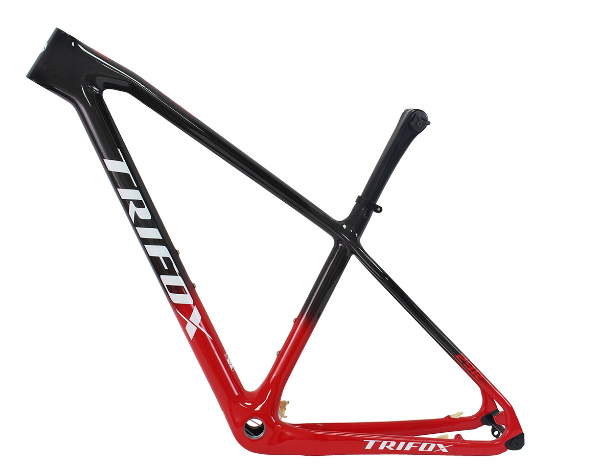
Setting up a full internal cable routing frame can drastically enhance the aesthetics and performance of your bike. By hiding the cables within the frame, you achieve a cleaner look while also reducing drag and preventing cable damage. Here’s a step-by-step guide to setting up a full internal cable routing frame for that sleek, professional appearance. 1. Choose the Right Frame The first step is selecting a frame designed for internal cable routing. The Trifox SDY21 Carbon MTB Hardtail Frame is an excellent choice. This lightweight, robust frame not only provides the benefits of a carbon build but also features internal routing capabilities that keep your cables protected and out of sight. 2. Gather Necessary Tools and Components Before you start, ensure you have all the necessary tools and components. You’ll need high-quality cables, housing, a cable cutter, a pick tool, and possibly a magnetic routing kit to help guide the cables through the frame. Having the right tools will make the process smoother and more efficient. 3. Plan Your Cable Paths Map out the paths each cable will take through your frame. Identify the entry and exit points, and ensure there are no sharp bends that could affect cable performance. The Trifox SDY21 features well-placed entrances and exits to simplify this process, giving you a clear path for routing. 4. Prepare the Frame Before inserting the cables, make sure the frame is clean and free of any debris. Use a clean cloth to wipe down the inside of the frame tubes if necessary. This prevents any dirt or grime from causing friction or wear on the cables. 5. Insert the Cables Start with one cable at a time. If you're using a magnetic routing kit, attach the magnet to the end of the cable and guide it through the frame using the magnet on the outside. If not, gently push the cable through, using a pick tool to help navigate through tight spots. Repeat this for each cable, ensuring they follow the planned paths. 6. Secure the Cables Once the cables are routed through the frame, secure them properly to prevent movement. Use internal cable guides or foam tube sleeves to minimize noise and protect the cables from damage. The Trifox SDY21 frame is designed to accommodate these guides, making it easier to keep everything in place. 7. Connect Components With the cables routed and secured, connect them to the corresponding components—derailleurs, brakes, and shifters. Test each connection to ensure everything is functioning correctly. 8. Final Adjustments Make final adjustments to the cable tension and trim any excess housing. Check that all cables move smoothly without any resistance, and make sure the bike operates efficiently. 9. Regular Maintenance Even with the best setup, periodic maintenance is essential. Inspect the cables regularly for any signs of wear or damage, and replace them as needed to maintain optimal performance. By following these steps, you can achieve a sleek, professional appearance with a full internal cable routing frame. The Trifox SDY21 Carbon MTB Hardtail Frame offers an ideal platform for this setup, combining advanced materials with thoughtful design to enhance both form and function.
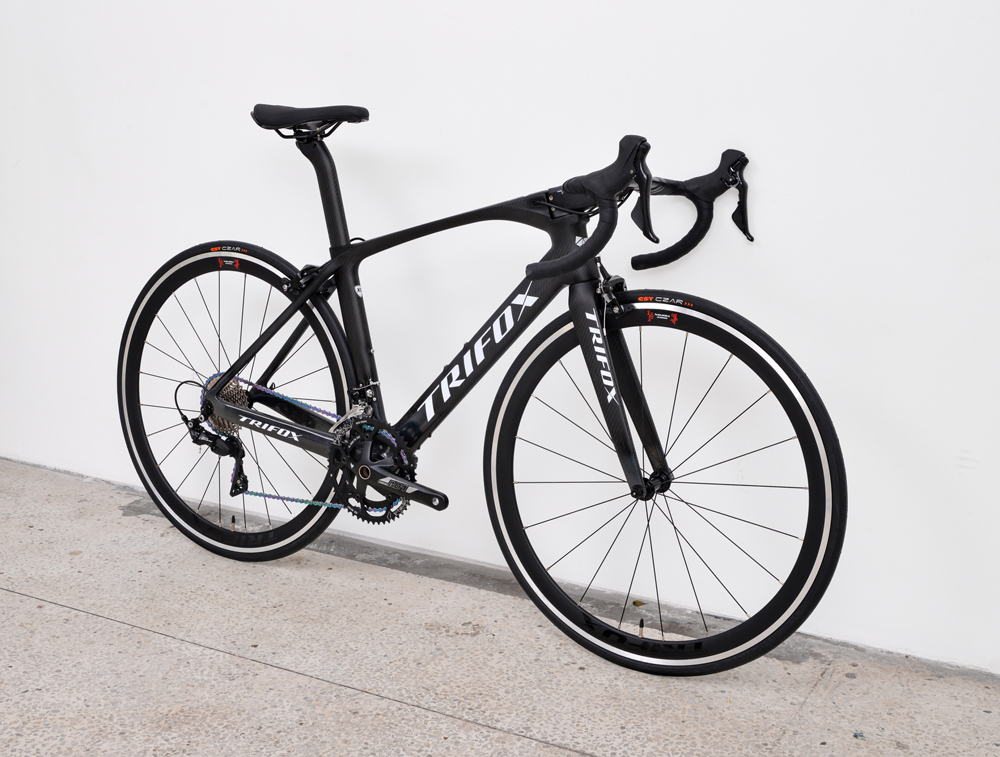
Selecting the right aero road frame can make a significant difference in your cycling performance, especially when it comes to speed. An aero frame is designed to minimize air resistance, allowing you to cut through the wind more efficiently. Here’s how to choose the best aero road frame to maximize your speed. 1. Understand the Benefits of Aero Frames Aero frames are engineered to reduce drag, the force that slows you down as you move through the air. These frames feature streamlined tube shapes and integrated components that help you maintain higher speeds with less effort. The Trifox X12 Carbon Road Bike Frame is an excellent example, designed with aerodynamics in mind to enhance performance. 2. Look for High-Quality Materials The material of the frame plays a crucial role in its performance. Carbon fiber is the go-to material for high-end aero frames due to its lightweight and stiff properties. The Trifox X12, made from premium T800 carbon fiber, provides an optimal balance between weight and stiffness, ensuring that every watt of power you generate is efficiently transferred to the road. 3. Consider Frame Geometry Frame geometry affects how the bike handles and how comfortable it is over long distances. Aero frames often have a more aggressive geometry compared to traditional road frames. This means a lower front end and a more extended reach, putting you in a more aerodynamic position. Ensure that the geometry of the frame you choose matches your riding style and flexibility. 4. Evaluate Integration Features Modern aero frames often come with integrated features such as hidden cables, aerodynamic seat posts, and internal routing systems. These integrations not only improve aerodynamics but also provide a sleeker look. The Trifox X12 excels in this area with its fully internal cable routing and integrated design, minimizing turbulence and enhancing speed. 5. Check Compatibility Ensure that the aero frame you choose is compatible with your existing components or the new ones you plan to install. The Trifox X12, for instance, is designed to work seamlessly with V-brake systems and other standard components, making it a versatile choice for many cyclists. 6. Test Ride If Possible If you have the opportunity, test ride a few different aero frames before making your decision. This hands-on experience can give you valuable insights into how each frame feels and performs under real-world conditions. 7. Seek Expert Advice Consult with experienced cyclists or professionals at your local bike shop. They can offer recommendations based on your specific needs and preferences, helping you make an informed decision. By considering these factors, you can choose an aero road frame that maximizes your speed and enhances your overall cycling experience. The Trifox X12 Carbon Road Bike Frame is a top contender, offering advanced aerodynamics, high-quality materials, and seamless integration to help you achieve peak performance.
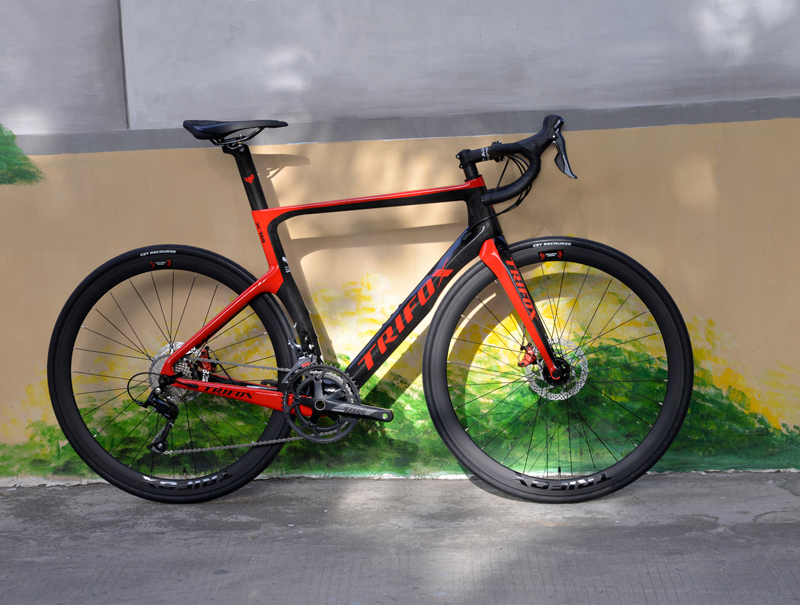
Optimizing the routing design for your bike frame can significantly enhance both the performance and aesthetics of your ride. A streamlined routing system not only reduces wind resistance but also offers a cleaner, more efficient look. Here are some essential tips to achieve an optimized routing design for your bike frame. 1. Choose the Right Frame The foundation of any well-optimized routing design starts with selecting the right frame. Frames like the Trifox X10 Carbon Road Bike Frame are built with internal cable routing features. This frame utilizes high-quality T800 carbon fiber, offering strength and durability while maintaining a low weight. Its seamless internal cable routing reduces wind resistance and enhances speed and efficiency on the road. 2. Plan Your Cable Paths Before you begin, map out the path each cable will take through your frame. This is particularly important for bikes with complex setups involving both DI2 and mechanical systems. Proper planning ensures that your cables won’t interfere with each other and that they follow the most direct, least obstructive route. 3. Use Quality Components Invest in high-quality cables and housing. Cheap components can lead to friction, reducing your bike’s performance and making shifting more sluggish. High-quality cables reduce drag and make your bike's operation smoother. 4. Maintain Cleanliness Ensure that all entry and exit points for your cables are clean and free of debris. Dirt or grime can increase friction and wear down your cables more quickly. Regularly check these areas, especially after rides in wet or muddy conditions. 5. Secure Cables Properly Use appropriate clamps or guides to secure the cables inside the frame. This prevents them from rattling around and potentially causing damage. The Trifox X10 frame, for instance, has a well-organized wiring system that runs through the upper tube of the frame head, simplifying the overall appearance while enhancing functionality. 6. Regular Maintenance Even the best routing design needs regular maintenance. Check the cables periodically for signs of wear and replace them as needed. Keeping your cables in top condition ensures that your bike performs at its best. 7. Consider Professional Help If you're not confident in your ability to optimize the routing design yourself, consider seeking professional assistance. A qualified bike mechanic can ensure that your cables are routed perfectly, maximizing your bike's performance and longevity. By following these steps, you can optimize the routing design for your bike frame, ensuring a smoother, faster, and more aesthetically pleasing ride. For a frame that facilitates this process, consider the Trifox X10 Carbon Road Bike Frame, which combines advanced materials and innovative routing features for top-tier performance.
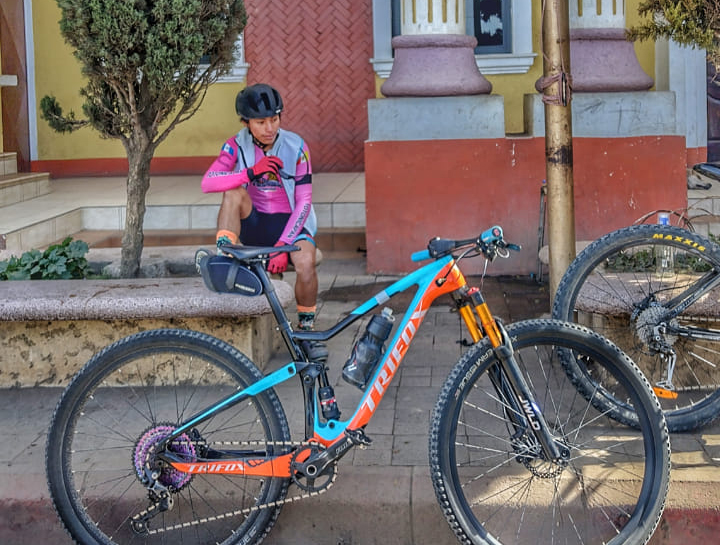
Choosing the right mountain bike frame is crucial for optimizing your riding experience. A top-tier mountain bike frame can significantly enhance performance, comfort, and durability on the trails. Here’s a guide on what features define a high-quality mountain bike frame and how to choose one, using the Trifox MFM100 Full Suspension Carbon MTB Frame as an example. 1. Material The material of the frame impacts weight, strength, and ride quality. High-end frames are typically made from carbon fiber, known for its excellent strength-to-weight ratio. The Trifox MFM100 uses premium carbon fiber, making it both lightweight and incredibly durable. This allows for better maneuverability and less fatigue on long rides. 2. Suspension Design A good suspension system is essential for absorbing shocks and providing a smoother ride. The MFM100 features a full suspension design that ensures optimal shock absorption on rough terrains. This enhances traction and control, allowing you to tackle challenging trails with confidence. 3. Geometry Frame geometry affects how the bike handles and feels. Look for a frame with a balanced geometry that offers stability on descents and agility on climbs. The Trifox MFM100 is designed with modern trail geometry, providing a perfect blend of comfort and performance, making it suitable for various riding styles. 4. Compatibility and Customization A top-tier frame should be compatible with a wide range of components and allow for customization. Ensure the frame fits your preferred wheel size, fork travel, and drivetrain options. The MFM100 is designed to accommodate diverse setups, giving you the flexibility to customize your bike according to your needs. 5. Durability and Build Quality Investing in a well-built frame ensures longevity and reliability. The Trifox MFM100 undergoes rigorous testing to meet high standards of durability and build quality. This means you can trust it to perform under demanding conditions and enjoy years of reliable service. 6. Weight While strength and durability are vital, a lighter frame can enhance performance by making the bike easier to handle and reducing rider fatigue. The MFM100 strikes an excellent balance between weight and durability, offering a lightweight frame without compromising on strength. How to Choose the Right Frame Assess Your Riding Style: Determine the type of riding you do most often (e.g., cross-country, trail, enduro) and choose a frame that suits that style. Fit and Comfort: Ensure the frame size is appropriate for your height and body type. A well-fitting frame improves comfort and control. Budget: While top-tier frames come with a higher price tag, they offer better performance and longevity. Consider investing in quality now to save on potential future upgrades or repairs. In conclusion, features like material quality, suspension design, geometry, and compatibility define a top-tier mountain bike frame. The Trifox MFM100 Full Suspension Carbon MTB Frame exemplifies these characteristics, making it an excellent choice for serious mountain bikers looking to elevate their ride. Choose wisely, and you'll enjoy a superior riding experience for years to come.
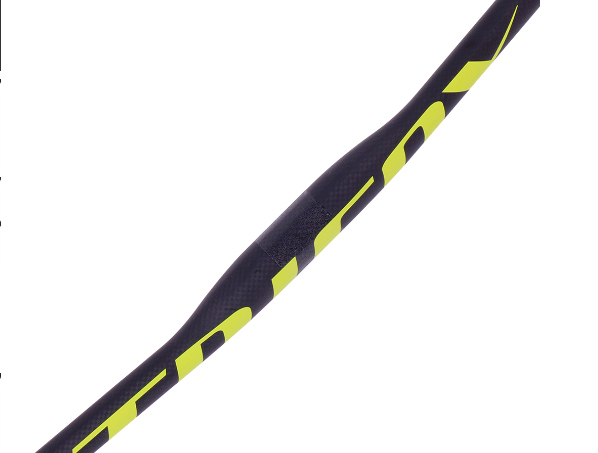
If you're an avid cyclist looking to improve your ride, you might want to consider upgrading to a flat bar. Unlike the traditional drop bars, flat bars offer a range of benefits that can enhance your cycling experience, especially for those who enjoy a more upright and comfortable riding position. Here’s why upgrading to a bicycle flat bar like the Trifox Carbon Flat Bar FHB100 could be the best decision you make. 1. Enhanced Comfort One of the main reasons cyclists opt for flat bars is the enhanced comfort they provide. Flat bars allow for a more natural hand position, which can reduce strain on your wrists, shoulders, and back. This is particularly beneficial on longer rides or rough terrains where maintaining a comfortable posture is crucial. 2. Improved Handling and Control Flat bars offer superior handling and control, making them ideal for urban commuting and off-road trails. The wider grip provides better leverage, allowing for more precise steering and easier maneuverability through tight spots or technical sections. The Trifox Carbon Flat Bar FHB100 is designed to optimize control while remaining lightweight. 3. Versatility A flat bar setup is incredibly versatile and can adapt to various cycling styles. Whether you’re riding in the city, tackling mountain trails, or enjoying casual weekend rides, a flat bar can accommodate your needs. It’s also easier to attach accessories like lights, bells, or GPS devices to a flat bar, adding to its practicality. 4. Durability Upgrading to a high-quality flat bar, such as the Trifox FHB100, ensures greater durability and longevity. Made from premium carbon fiber, the FHB100 is not only strong but also exceptionally lightweight, reducing the overall weight of your bike without sacrificing performance. 5. Ease of Installation and Maintenance Switching to a flat bar is relatively straightforward and can usually be done with basic tools. Additionally, flat bars tend to require less maintenance compared to drop bars, as they have fewer components that can wear out or need adjustment. 6. Aesthetic Appeal For many cyclists, the sleek, minimalist look of a flat bar is more appealing than the more complex appearance of drop bars. The Trifox Carbon Flat Bar FHB100, with its clean lines and refined finish, can give your bike a modern, streamlined look. In conclusion, upgrading to a bicycle flat bar like the Trifox Carbon Flat Bar FHB100 offers numerous benefits, from enhanced comfort and improved handling to greater durability and aesthetic appeal. Whether you’re looking to tackle new terrains or simply make your daily commute more enjoyable, a flat bar could be the perfect upgrade to elevate your cycling experience.
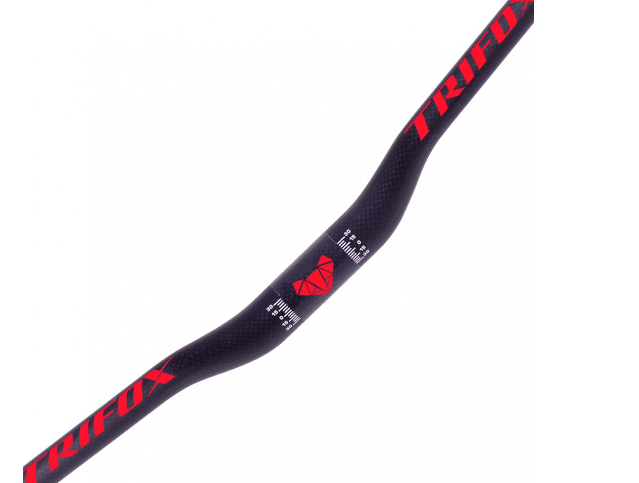
When it comes to cycling, the handlebar is more than just a steering mechanism—it's a critical component that affects control, comfort, and performance. A robust handlebar can elevate your riding experience, making it essential for cyclists of all levels to understand what constitutes a durable and reliable handlebar. Here’s what you need to know about robust handlebars and why they matter, using the Trifox Carbon Riser Handlebar RHB300 as an example. 1. Material Quality The foundation of a robust handlebar lies in its material. High-quality materials like carbon fiber offer a blend of strength and lightweight properties. The Trifox Carbon Riser Handlebar RHB300 is made from premium carbon fiber, providing excellent durability without adding unnecessary weight. This balance is crucial for maintaining bike agility and rider comfort. 2. Design and Construction A well-designed handlebar should distribute stress evenly to prevent weak points that could lead to failure. The Trifox RHB300 features a carefully engineered design that enhances structural integrity. Its riser shape also contributes to better control and ergonomics, allowing for a more comfortable and responsive ride. 3. Ergonomics Comfort is key during long rides, and a robust handlebar should cater to ergonomic needs. The rise and sweep of the handlebar affect hand positioning and overall comfort. The Trifox RHB300 is designed with a thoughtful rise and back-sweep angle, ensuring a natural wrist position and reducing fatigue on extended rides. 4. Vibration Dampening Cycling over rough terrain can transfer vibrations to your hands and arms, leading to discomfort or even injury. A robust handlebar like the Trifox RHB300 incorporates vibration-dampening properties inherent in carbon fiber. This helps absorb shocks and vibrations, resulting in a smoother and more enjoyable ride. 5. Strength and Durability To withstand the rigors of various terrains, a handlebar must be strong and durable. The Trifox RHB300 has been subjected to rigorous testing to ensure it meets high standards of strength and longevity. This reliability means you can trust it to perform under demanding conditions, whether you're tackling mountain trails or rough urban streets. Why Should You Care? Investing in a robust handlebar is not just about enhancing your bike’s aesthetics. It directly impacts your safety, comfort, and performance. A high-quality handlebar ensures better control and stability, reducing the risk of accidents. Comfort enhancements from ergonomic designs reduce fatigue, allowing you to ride longer and more enjoyably. Moreover, the durability of a robust handlebar means fewer replacements and repairs, saving you money in the long run. In conclusion, understanding what makes a handlebar robust and investing in a quality product like the Trifox Carbon Riser Handlebar RHB300 can significantly enhance your cycling experience. Prioritize quality, and you'll reap the benefits of a safer, more comfortable, and more enjoyable ride.

Choosing the right hardtail mountain bike (MTB) frame is crucial for optimizing your trail riding experience. A hardtail frame, which lacks rear suspension, offers a lightweight and efficient ride ideal for various terrains. Here's a guide on how to select and install a hardtail MTB frame, using the Trifox Carbon MTB Hardtail Frame MFM200 as an example. Selecting the Right Frame 1. Material The material of your frame affects weight, strength, and ride quality. The Trifox MFM200 is crafted from carbon fiber, known for its superior strength-to-weight ratio, providing excellent durability without compromising on performance. 2. Geometry Frame geometry influences handling and comfort. Look for a frame like the MFM200 with a balanced geometry that offers stability on descents and agility on climbs. 3. Compatibility Ensure the frame is compatible with your current components or any new ones you plan to install. Check for compatibility with wheel size, fork travel, and bottom bracket type. Installing the Frame 1. Prepare Your Components Gather all necessary components: fork, headset, bottom bracket, drivetrain, brakes, and wheels. Ensure they are clean and in good condition. 2. Install the Headset and Fork Begin by installing the headset into the frame’s head tube, followed by the fork. Make sure these components are securely fitted. 3. Bottom Bracket and Crankset Install the bottom bracket according to the manufacturer's specifications, then attach the crankset. 4. Drivetrain Setup Mount the front and rear derailleurs, chain, and cassette. Adjust the derailleurs for smooth shifting. 5. Brakes and Wheels Attach the brake calipers to the frame and install the wheels. Align the brake rotors with the calipers and ensure everything is properly tightened. 6. Final Adjustments Check all components for tightness and alignment. Adjust the seat post, saddle, and handlebars to your preferred riding position. By selecting a high-quality frame like the Trifox Carbon MTB Hardtail Frame MFM200 and following these installation steps, you'll be well on your way to enjoying optimal performance on the trails.

















